- Home
- James Joyce
Stephen Hero
Stephen Hero Read online
Contents
Foreword by John J. Slocum and Herbert Cahoon
Introduction by Theodore Spencer
Editorial Note
Stephen Hero (pp. 511 ff. of the Manuscript)
Stephen Hero (additional Manuscript pages, 477 ff.)
Illustrations
Program, University College Literary and Historical Society
Notes on Tenebrae, in Joyce’s hand
George Clancy, J. F. Byrne and James Joyce
Page 827 of the Stephen Hero manuscript
Foreword
TO THE NEW EDITION
The personal library of James Joyce, with the literary manuscripts which he had chosen to preserve, was left in Trieste in the care of his brother Stanislaus when Joyce moved to Paris in June, 1920. Subsequently, at Joyce’s request, his brother sent him the greater portion of the library including the bulk of the surviving pages of the early draft of A Portrait of the Artist as a Young Man, known as Stephen Hero. Joyce turned over many of these manuscripts to Miss Sylvia Beach, publisher of Ulysses. Stanislaus Joyce retained a certain number of manuscript items including twenty-five additional pages of Stephen Hero which were purchased by John J. Slocum in 1950 and are here printed for the first time. These pages, as numbered by Joyce, precede numerically the 383 pages edited by the late Theodore Spencer and are numbered 477-8, 481-9, 491-7, 499-505; the first manuscript page of the text Spencer published in 1944 is numbered 519. In this edition the additional material, however, follows the originally published text.
This newly discovered portion of the manuscript is actually an episode by itself, although still incomplete; this unity may be the reason that it was preserved by James Joyce. The first eight lines of manuscript on page 477 were destined to become, with a few changes, the last part of the diary entry of April 16 at the conclusion of A Portrait. The remainder of the manuscript tells of a visit that Stephen Daedalus made to his godfather, Mr Fulham, in Mullingar, Westmeath, sometime after he had begun his studies at University College in 1898. The words, “Departure for Paris,” words that mark the end of A Portrait, have been written by Joyce in blue crayon across the page at the conclusion of the first eight lines. It is probable, though by no means certain, that the pages preceding page 477 were discarded as they were used in the creation of A Portrait. It is also probable that the missing pages from this episode included descriptions or dialogues that eventually found their way into A Portrait. Joyce’s known economy of episode and phrase was such that even the rejected portions of his manuscripts usually contributed heavily to a published work.
Mullingar, in the center of Ireland, has none of the urban polish of the other two Irish cities Joyce describes in his work, Dublin and Cork, and he perhaps intended at first to use these scenes of provincial life to fill out his picture of Ireland. He knew Mullingar well, having accompanied his father there during the summers of 1900 and 1901, when John Joyce was charged with the duty of straightening out the confused Mullingar election lists. James Joyce’s copy of D’Annunzio’s The Child of Pleasure, now in the Yale University Library, bears Joyce’s signature and the words, “Mullingar July.5.1900.”; the manuscript of his translation of Hauptmann’s Vor Sonnenaufgang is inscribed, “Summer, 1901. MS/Mullingar. Westmeath.” Joyce alters the actual events considerably by representing Mullingar as the home of Stephen’s godfather, Mr Fulham. (Joyce’s godfather was Philip McCann, who had no connection with Mullingar and had died in 1898.) This fiction is continued in the later pages of Stephen Hero, where Mr Fulham is mentioned repeatedly as the source of money for Stephen’s university expenses. It is conceivable that an undiscovered patron is represented by the figure of the godfather.
Many of the incidents in these pages must have had their origins in Joyce’s “epiphanies,” those unostentatious moments of revelation which Joyce was in the habit of recording for future use. The descriptions of the lame beggar and of Mr Garvey of the Examiner are based directly upon two surviving “epiphanies” now in the Joyce Collection of the Lockwood Memorial Library of the University of Buffalo. In turn these pages sometimes affect later work. So Nash who appears in this Mullingar episode, and Mr Tate who is mentioned in it, return in A Portrait. There is an echo of Captain Starkie’s story of the old peasant in the April 14 entry of Stephen’s diary in the last chapter of A Portrait. Stephen’s remark to Mr Heffernan, “My own mind is more interesting to me than the entire country,” is close to his remark to Bloom in Ulysses, “You suspect that I may be important because I belong to the faubourg Saint-Patrice called Ireland for short…. But I suspect that Ireland must be important because it belongs to me.” It is close, too, to Joyce’s remark to Yeats in 1902 that his own mind “was much nearer to God than folklore.” Finally, Mullingar is mentioned several times in Ulysses because Milly Bloom is said to be working there in a photographer’s shop.
But Joyce never used the bulk of the Mullingar episode, perhaps because he came to feel that the role of Stephen showing off against the provincials had something disagreeable in it. There are also hints that he originally intended to give Mr Fulham a more important role in his book; when his plans changed, the episode became a little irrelevant.
These new pages do not add any new dimensions to the character of Stephen, but the arguments and situations, in which Stephen, as usual, emerges triumphant, contain some excellent expositions of his attitudes toward religion, Irish nationalism and his countrymen. The sensitive, self-righteous, honest and cruel young man is beautifully displayed.
In preparing these pages for publication we have followed the editorial procedures of Professor Spencer as set forth in his editorial note. We are grateful to Professor Richard Ellmann of Northwestern University for his advice and criticism, to the late Stanislaus Joyce, and to the Estate of James Joyce and the Yale University Library, owner of the manuscript, for permission to publish these additional pages.
John J. Slocum
Herbert Cahoon
Since the publication of this edition in 1955, five more pages of Stephen Hero have come to light, and the unfortunate gaps in the Additional Manuscript Pages have been filled. The story of the lame beggar and the argument with Mr. Heffernan are now complete and we know what was on the paper near the corpse of the woman from the asylum. But the page added at the end of the episode leaves us in greater suspense than ever, for Stephen seems about to begin a romantic scene with Miss Howard. Perhaps, in time, more pages of Stephen Hero, like fragments of Aquinas, will appear to add to our knowledge and satisfy our curiosity.
These new pages were first published in A James Joyce Miscellany, Second Series (1959) but appear in this volume for the first time with the other portions of the surviving text. They are printed with the permission of their owner, the Cornell University Library, the Estate of James Joyce, and the Southern Illinois University Press.
Introduction
IN 1935, Miss Sylvia Beach, the first publisher of Ulysses, issued a catalogue from her bookshop, Shakespeare and Company, 12 Rue de l’Odéon, Paris, in which she offered for sale, among other things, certain manuscripts of James Joyce. One of these consisted of pp. 519–902 of an early version of A Portrait of the Artist as a Young Man, in Joyce’s handwriting. These pages were bought by the Harvard College Library in the autumn of 1938, and are here, with the permission of Joyce’s executors, and of the Harvard College Library, printed for the first time.
There is some confusion about the date of this manuscript. In her catalogue Miss Beach, to whom Joyce originally gave it, says that it dates from 1903, and adds the following sentence: “When the manuscript came back to its author, after the twentieth publisher had rejected it, he threw it in the fire, from which Mrs. Joyce, at the risk of burning her hands, rescued these pages.” This story is to some
extent supported by Mr. Herbert Gorman, who says in his life of Joyce, writing of the year 1908: “Joyce burned a portion of Stephen Hero [as the book was then called] in a fit of momentary despair and then started the novel anew in a more compressed form.” *
No surviving page of the manuscript shows any signs of burning.
Joyce himself was not very communicative on the subject. When the present writer wrote to him about the manuscript at the end of 1938, he received a reply from Joyce’s secretary which said: “Apparently the very large MS of about 1000 pages of the first draft of A Portrait of the Artist as a Young Man, which he calls a schoolboy’s production written when he was 19 or 20, has been sold in lots to different institutions in America. He feels that he can do nothing in the matter except to state this fact which he certainly can scarcely be blamed for not having foreseen at the moment of the presentation he made of it [sic].”
Since Joyce was born in 1882, the ages here mentioned suggest that the manuscript was written in 1901–02, instead of 1903, as Miss Beach’s catalogue says. Both dates, however, are apparently too early. Mr. Gorman, whose book was checked by Joyce, tells us that when Joyce left Ireland in 1904, he took with him a first chapter and notes for Stephen Hero, and he prints [p. 148] a letter from Joyce to Grant Richards written on March 13, 1906, which speaks of the book as half finished:
You suggest I should write a novel in some sense autobiographical. I have already written a thousand pages of such a novel, as I think I told you, 914 pages to be accurate. I calculate that these twenty-five chapters, about half the book, run into 150,000 words. But it is quite impossible for me in present circumstances to think the rest of the book much less to write it.
From this account it seems clear that Stephen Hero was written between 1904 and 1906.
The discrepancy between the different dates may be reconciled, I believe, by remembering that when Joyce left Ireland he took with him “notes” for his book. Mr. Gorman prints some of them [pp. 135 ff.]. It seems highly probable that there were also fuller notes than these, consisting of transcripts of conversations, etc., which were incorporated without much change into the manuscript: the reader of the following pages will undoubtedly agree that much of the talk sounds as if it had been taken down immediately after it had been spoken. If this is so, then we can think of the manuscript as representing the work of the years 1901 to 1906. It is a very clean copy, with only a few corrections, and Joyce’s handwriting is remarkably legible.
The first 518 pages have apparently disappeared for good; I doubt very much if they have been “sold in lots to different institutions in America.” * Probably the story of their having been burnt is correct — although there is no evidence in Mr. Gorman’s book to indicate that the manuscript was ever sent to twenty publishers. Yet though the loss of the early pages is greatly to be regretted, the 383 pages that remain have a kind of unity in themselves. As Joyce planned it, Stephen Hero was to be “an autobiographical book, a personal history, as it were, of the growth of a mind, his own mind, and his own intensive absorption in himself and what he had been and how he had grown out of the Jesuitical garden of his youth. He endeavoured to see himself objectively, to assume a godlike poise of watchfulness over the small boy and youth he called Stephen and who was really himself.” [Gorman, p. 133.] The Harvard manuscript describes about two years of Stephen’s life; it begins shortly after he enters the National University, and it breaks off just as Stephen’s emancipation from all that the University implies reaches a kind of climax. It does not give us a picture of the “small boy,” but it gives us a very vivid and coherent picture of the “youth” who is called Stephen Daedalus, but who, in his appearance, his actions and his thought, is so evidently James Joyce.
It can be seen at a glance that this early version is very different from the version eventually published as A Portrait of the Artist as a Young Man. The period covered by the 383 pages of the manuscript occupies only the last 93 pages of the published version [Modern Library Edition] — the manuscript account of Stephen’s two years at the University is at least as long as the whole history of his development in its final form. It portrays many characters and incidents which the published version leaves out, and it describes the growth of Stephen’s mind in a far more direct and less elliptical form than that with which we are familiar. Consequently, though Joyce rejected it, and in his later years scorned it — from the reader’s point of view, unjustifiably — as a “schoolboy’s production,” the interest of the manuscript to admirers of Joyce is great. It not only gives us a wonderfully convincing transcript of life, it throws light on Joyce’s whole development as an artist by showing us more clearly than we have been able to see before what the beginning of that development was like.
-II-
Every reader of the present text will want to make his own comparisons between its picture of Stephen Daedalus and the picture given by the final version; I do not want to forestall any such critical pleasure by making exhaustive comparisons myself. Nevertheless there are certain characteristics of the manuscript which are of such special interest that they may, I hope not too obtrusively, be briefly pointed out in advance.*
The most obvious of these characteristics is the wealth of detail with which incidents and people are described. For example the Daedalus family is much more clearly seen than in the final form of the book; the family gives a richly sordid background to the arrogant growth of Stephen’s mental independence through his University years: in the final version, the members of the family have virtually disappeared from the scene by the time Stephen has gone to the University. In the Portrait we have nothing like the description of Mr. Wilkinson’s house [pp. 159 f.]; we hear nothing of Stephen’s intimacy with his brother Maurice; the pathetic and shocking account of the illness and death of Stephen’s sister Isabel [pp. 164 ff.] is entirely omitted; nothing is said of Stephen’s attempt to convert his family to an admiration of Ibsen [pp. 84 ff.]. Even when the same incidents are mentioned, the present text usually treats them in a different manner — a more direct and dramatic manner — than that used in the Portrait. A typical illustration of this is the handling of Stephen’s refusal to perform his Easter duty. In the present text [pp. 131 ff.] the argument between Stephen and his mother is given as a dialogue — no doubt as it actually occurred — and it is a very effective piece of writing. But in the Portrait [Modern Library Edition, p. 281] the scene, which is a crucial one in Stephen’s history, is merely referred to in a conversation with Cranly.
We can easily understand, of course, what Joyce was aiming at when he discarded his first draft and re-wrote the material. He was aiming at economy, and he was trying to place his center of action as much as possible inside the consciousness of his hero. To do this he evidently decided to sacrifice the method — which is, after all, the method of Dubliners rather than that of the Portrait — of objectively presenting one episode or character after another. As a result the Portrait has more intensity and concentration, a more controlled focus, than the earlier version. In the Portrait, as Mr. Levin observes, “drama has retired before soliloquy.” The diffuseness of real life is controlled and ordered by being presented from a single point of view. Furthermore the method used in the Portrait of merely hinting at an episode or conversation instead of describing it in full (compare the way Giordano Bruno is introduced in the Portrait [p. 294] with the way he is introduced in the present version [p. 170]) —this method makes Stephen’s thoughts and actions more suggestive than they are as Joyce describes them here. In the Portrait we are looking at a room through a keyhole instead of through an open door; the vague shapes which we can with difficulty see in the dark corners add portentousness to what our framed and limited vision can perceive. In the present version the door is open, and everything is made as visible as possible. To change the image: we here see things in daylight, instead of under a spotlight; here there is less emphasis, less selection, less art.
But the increased pressure of concentration to be f
ound in the Portrait, however desirable or admirable it may be, is gained at a loss. For example: in the Portrait we are introduced to Stephen’s friends — Cranly, Lynch and the rest — as items, so to speak, in Stephen’s mind. They are not pictured for us; Joyce expects us to take them for granted, as features in Stephen’s landscape which need no further identification beyond their names and their way of speaking. But in the present text these friends are much more clearly identified; Joyce introduces us to them by describing their appearance and their points of view; they have an independent reality of their own, like the people in Dubliners; they are not merely sounding boxes or slot-machines, as they are in the Portrait, for the ideas of the all-important Stephen.
This is particularly true of the girl to whom Stephen is physically (though not otherwise) attracted. In the Portrait she has only initials — E.C. — and Stephen’s reveries center round a virtually anonymous young girl. But in the present text the girl is named Emma Clery, and she has a living personality which is lacking in her merely initialed successor. There are several scenes in the present text [particularly that on pp. 66 ff.] where we see Emma very clearly indeed, and as a result Stephen’s relations with her become, like his relations with other people, more dramatic than they are in the final version.*
The most striking differences which the reader will notice between the two versions is in the way Stephen himself is described. In the present text he is emotionally and intellectually a cruder and more youthful figure than in his creator’s eyes he was later to become; he is more like the average undergraduate and, in spite or because of the fact that he is portrayed more diffusely, he is on the whole a more sympathetic person, proud and arrogant as he may be. He has more weaknesses and does more foolish things (such as his pursuit of Emma) than are entirely consistent with the self-possession of his later portrait. He has a hero-worship for Ibsen, which is scarcely mentioned later, and his reaction from his Jesuit training makes him rage in a more sophomoric fury against what he calls the “plague of Catholicism.” He is more dependent on his family for approval and support.

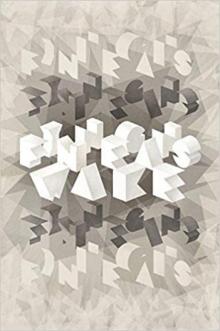 Penguin Classics the Restored Finnegans Wake
Penguin Classics the Restored Finnegans Wake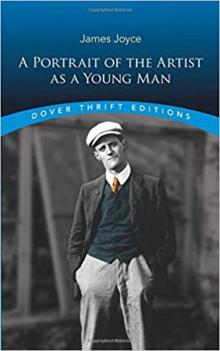 A Portrait of the Artist as a Young Man (Dover Thrift Editions)
A Portrait of the Artist as a Young Man (Dover Thrift Editions)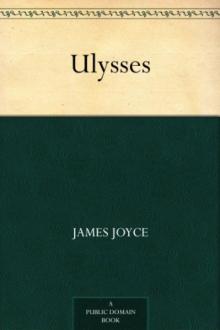 Ulysses
Ulysses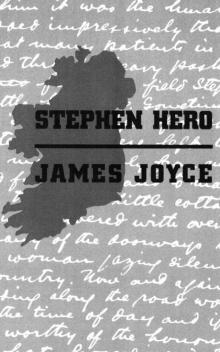 Stephen Hero
Stephen Hero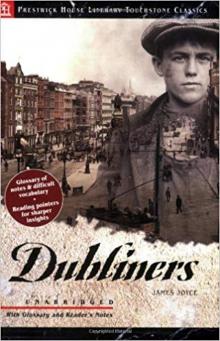 Dubliners
Dubliners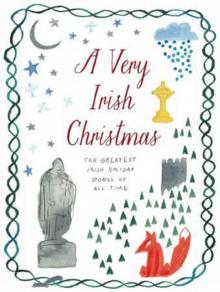 A Very Irish Christmas
A Very Irish Christmas The Complete Works of JAMES JOYCE
The Complete Works of JAMES JOYCE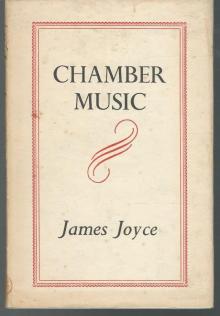 Chamber Music
Chamber Music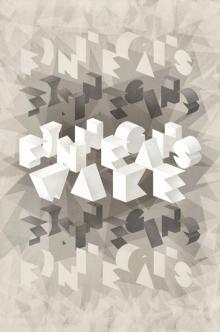 The Restored Finnegans Wake
The Restored Finnegans Wake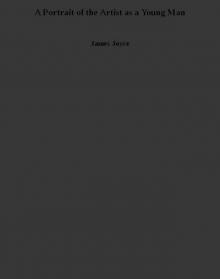 A Portrait of the Artist as a Young Man
A Portrait of the Artist as a Young Man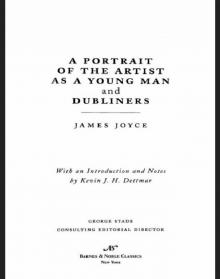 Portrait of the Artist as a Young Man and Dubliners (Barnes & Noble Classics Series)
Portrait of the Artist as a Young Man and Dubliners (Barnes & Noble Classics Series)